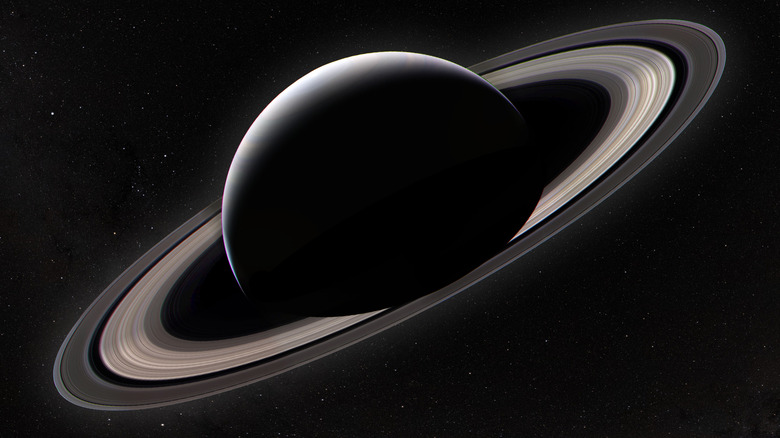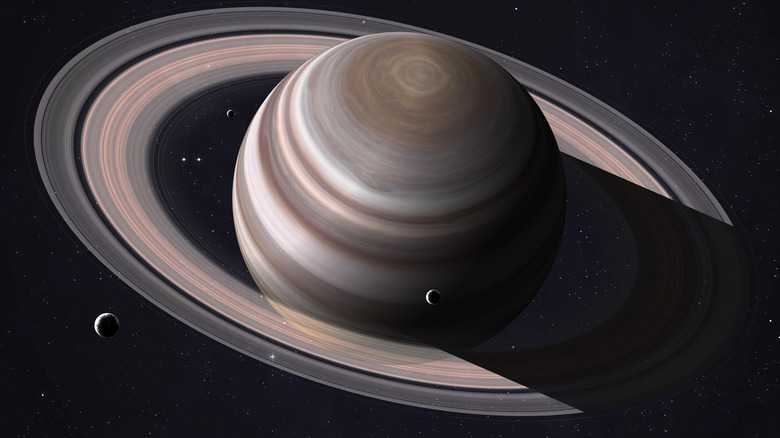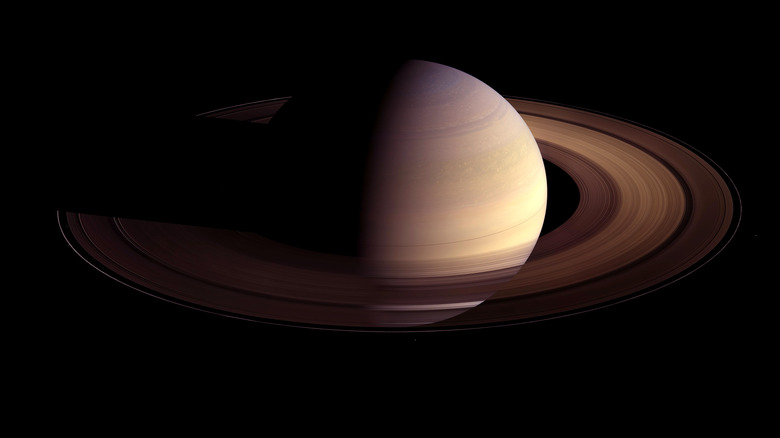Why Science Can't Figure Out How Old Saturn's Rings Are
Humans have been observing Saturn for as long as we've been looking up at the night sky, as it's one of the five planets visible to the naked eye. It wasn't until 1610, however, that an astronomer first pointed a telescope at the planet. And when Galileo did so, according to NASA, he discovered that the planet had two unidentifiable masses behind it. National Geographic reports that Galileo initially thought that Saturn consisted of three separate bodies; other early astronomers suggested the planet had "ears," according to Universe Today. It would take later observation to determine that what Galileo was actually seeing was rings.
We've been observing Saturn through telescopes for centuries, and for decades, we've been sending spacecraft there to plumb its depths. And while missions from Cassini and other probes have revealed information about the size and composition of the planet's rings, one fact that has eluded scientists is the age of the rings. Simply put, according to Scientific American, the evidence points simultaneously to the rings being nearly as old as the solar system itself, and to the rings being comparatively young (a few tens of millions of years old). And scientists aren't sure which theory is correct.
Some evidence points to Saturn's rings being young
Scientists believe that Saturn's rings came about in one of two ways, according to Scientific American: Either they were there from the beginning, coalescing around the planet as it and its moons formed 4.5 billion years ago, or they were formed when Saturn's gravity shredded a comet. Possibly an asteroid collision with a Saturnian moon created the debris that coalesced into the rings we see today.
Lending some credence to the young ring hypothesis is the fact that the Cassini probe studied some of the material found in Saturn's rings and found it remarkably un-polluted. Had they been around for billions of years, the theory goes, they'd be covered with dust from the universe and, thus, would not appear so bright to researchers on Earth.
Robin Canup, of the Southwest Research Institute, told Scientific American that this could point to the rings being comparatively young. "The fact that the rings are bright tells us in some way that they have not been efficiently polluted, or at least that we don't see the evidence of that," she said.
Some evidence points to the rings being old
Ring expert Luke Dones, also of the Southwest Research Institute, isn't convinced by the young ring theory, according to Scientific American. While it's theoretically possible that a comet-shredding or moon-shattering event took place in that region of the solar system in comparatively recent times, there are too few comets flying about for that scenario to have resulted in Saturn's rings, Dones says.
Canup also sees evidence for the old-ring theory. Estimates of the mass of the rings — roughly one half of the total mass of Saturn's moon Mimas — combined with computer modeling suggest that the rings were formed along with the planet and its moons, roughly 4.5 billion years ago. "The rings just happen to have the exact mass that one would expect if they had been colliding and spreading for four billion years," Canup says. She also notes that Cassini's observations, as well as concurrent research, point in two directions, a situation she calls "interesting."


